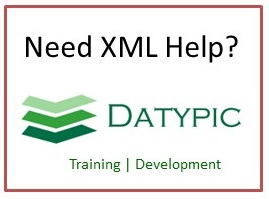ShipUnitBaseType
Ship Unit Base Type for detailing the minimum generic details of any container or package that is used for shipping including how to recognize, route, trace, track including its different weights
Complex type information
Namespace: http://www.openapplications.org/oagis/10
Schema document: Common.xsd
Properties: ID: oagis-id-57b8cf328fee4a068ff36bb435cf9408
Content
- Sequence [1..1]
- TrackingID [0..*] TRACKINGID is a unique identifier for the purpose of tracking an individual package or shipment Examples of a valid TRACKINGID include: •An express parcel tracking number as typically assigned by UPS, DHL, Fedex or other similar carriers. •A UCC (Uniform Code Council) Serialized Shipping Container (SCC-18) identifier, as assigned by the shipper. •A "Pro Number" (Progressive Number), as assigned by an LTL (less-than-truckload) freight carrier. Since the same Pro Number can be assigned to multiple shipping units within an LTL shipment, the SHIPUNITSEQ and SHIPUNITTOT field identifiers may be used to identify the individual pieces. •The unique identifier of a motor freight trailer, railroad box or tank car, ocean freight container or other transportation vessel.
- ShipUnitSequenceID [0..1] In a set of similar shipping units for a delivery, ShipUnitSequenceId represents a particular unit out of the total set. When used in conjunction with ShipUnitTotalId and printed on a shipping unit label or packing list, the receiving partner can easily ascertain whether or not the delivery was complete.
- ShipUnitTotalID [0..1] In a set of similar shipping units for a delivery, ShipUnitTotalId represents the total or final unit in the set. When used in conjunction with ShipUnitSequenceId and printed on a shipping unit label or packing list, the receiving partner can easily ascertain whether or not the delivery was complete.
- ContainerGroupID [0..1]
- ContainerID [0..*] The unique identifier of a container that holds the associated entity. A container is typically used for shipping material. Whether they be raw material or finished goods or piece parts.
- RFID [0..1] Allows an instance of an item to carry any radio frequency identifier (RFID) that maybe used by a supply chain.
- SealID [0..1] Identifies the tamper-proof seal placed on a shipping container to prevent pilfering of the contents.
- Description [0..*]
- Note [0..*]
- DocumentReference [0..*]
- Attachment [0..*] The Attachment represents binary data files that may be included within a BOD. These files replace the paper specifications and drawings attached to a BOD definition to clearly communicate design requirements. This Data Type is optional. Attachment usage is further defined by its position.
- CarrierParty [0..1] Identifies the party that serves as the carrier of the goods or services for the transaction.
- ShipFromParty [0..1] Identifies the party that the goods or services are being shipped or sent from.
- ShipToParty [0..*] Identifies the ShipToParty for the document or the line. In a lot of cases, this is the same as the CustomerParty. In multi-organization purchasing, the CustomerParty may be different from the BuyerParty
- DeclaredValueAmount [0..1] Is the declared monetary value of the contents of a shipping unit or a delivery for insurance purposes.
- ShipmentDateTime [0..1] Is the timestamp that indicates when the associated entity(ies) are shipped.
- ContainsHazardousMaterialIndicator [0..1]
- ExportLicenseRequiredIndicator [0..1] Communicates the need for an export license on a good or service. Valid values are '0' for no license required, and '1' for license required.
- ImportLicenseRequiredIndicator [0..1] Communicates the need for an import license on a good or service. Valid values are '0' for no license required, and '1' for license required.
- ScheduledDeliveryDateTime [0..1] The scheduled delivery date provided by the supplier.
- ActualDeliveryDateTime [0..1] Is the actual delivery date and time of the line item.
- SpecialHandlingNote [0..*] This describes any special, physical handling needs that the freight might have. For example, the need for a lift gate
- Status [0..1] Indicates the status of the associated object by providing the Status Code along with a description and when the status is effective.
- DunnageWeightMeasure [0..1] Specifies details of the shipped unit weight
- TareWeightMeasure [0..1] Tare weight of the associated Entity. The Tare weight is the weight of the packaging when empty (in the case of a pallet the weight of the empty pallet) that when subtracted from the Gross weight results in the Net weight.
- NetWeightMeasure [0..1] Net weight of the associaed item. The net weight is calculated by subtracting the tare weight or the weight of the container from the GrossWeight.
- GrossWeightMeasure [0..1] Gross weight of the associated entity. The total weight of the entity without reduction of packaging or container. I.e The Gross wieght of a pallet of goods includes the weight of the pallet.
- NetVolumeMeasure [0..1]
- TotalVolumeMeasure [0..1] Quantifies the volume, or amount of space, that is occupied by an item, container or shipment.
- DistributeCharge [0..*] Specifies the details for allocating a portion of a charge properly
from type IdentificationTypefrom group TrackingIDGroupfrom group ContainerInstanceIDsGroupfrom group FreeFormTextGroupfrom group ReferencesGroupfrom group ShippingWeightAndVolumeGroup
Attributes
| Name | Occ | Type | Description | Notes |
|---|---|---|---|---|
| typeCode | [0..1] | CodeType_1E7368 | from type IdentificationType | |
| actionCode | [0..1] | ActionCodeContentType | from type IdentificationType |
Used by
- Element ReceiveDeliveryUnit via derived type ReceiveDeliveryUnitType
- Element ShipmentUnit via derived type ShipmentUnitType
Type inheritance chain
- IdentificationType
- ShipUnitBaseType
- extended by ShipmentUnitBaseType
- extended by ShipmentUnitType
- extended by ReceiveDeliveryUnitBaseType
- extended by ReceiveDeliveryUnitType
- extended by ShipmentUnitBaseType
- ShipUnitBaseType



